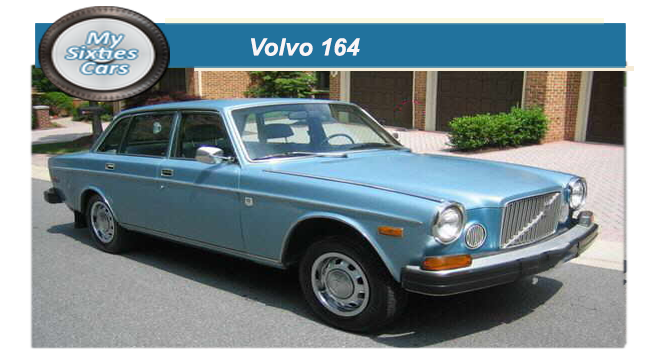
In the autumn of 1968, Volvo took their top selling 144 sedan up a peg, introducing a luxury version- increasing its rank to the 164.
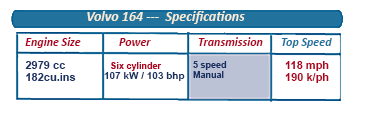 The Volvo 164 Sedan was the first six-cylinder engine car produced by the company for close to two decades after the PV60 was discontinued in 1950.
The Volvo 164 Sedan was the first six-cylinder engine car produced by the company for close to two decades after the PV60 was discontinued in 1950.
Jan Wilsgaard, head of the design department at Volvo for four decades from the Fifties till the Nineties was handed the task of creating the new 164.
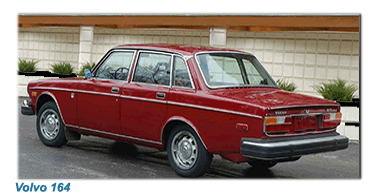 Wilsgaard reportedly took much of his inspiration from designing the front of the 164 from the Volvo P1900 coupe of the Fifties, apparently beginning to plan the project almost ten years before it was launched.
Wilsgaard reportedly took much of his inspiration from designing the front of the 164 from the Volvo P1900 coupe of the Fifties, apparently beginning to plan the project almost ten years before it was launched.
While it was not that difficult to discern the differences between the 144 and the 164, even though it was from the front that the principal difference lay, with a much longer bonnet to fit the larger engine and a redesigned grille that was considerably more imposing than the 144.
![]()
The exterior of the 164 had also been taken up a level or two from the 144, the principal difference was that the Volvo 164 was a much more powerful vehicle, driven by a 2979 cc in-line, 6-cylinder engine.
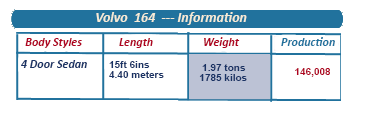 Volvo’s engineers did a magnificent job of increasing the capacity of their in-house developed B18 straight-four 1982cc engine to reach that level of power, essentially increasing it by 50 per cent.
Volvo’s engineers did a magnificent job of increasing the capacity of their in-house developed B18 straight-four 1982cc engine to reach that level of power, essentially increasing it by 50 per cent.
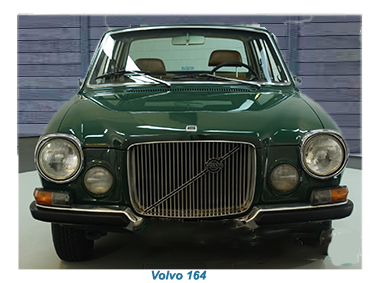 Volvo’s plan was the 164 would compete for new buyers or existing owners who may have been considering “ trading up” to one of the more luxurious saloons available from West Germany or Italy, as they were unable to find anything in the Swedish company's range to suit their needs.
Volvo’s plan was the 164 would compete for new buyers or existing owners who may have been considering “ trading up” to one of the more luxurious saloons available from West Germany or Italy, as they were unable to find anything in the Swedish company's range to suit their needs.
Interior space in the Volvo 164 was the same as the 144's, dominated by a high quality but imitation wooden dashboard and matching trim.
Most buyers preferred to take advantage of the option of leather seating in place of the fabric trim that came as standard.
As had become the principal characteristic of Volvo cars of the Sixties, the 164 It combined safety and comfort without one compromising the other.
The 164 was constructed with a “crumple” front and rear end design designed to absorb impact in the event of a collision.
![]()
The driver was also protected by the car’s two-piece collapsible steering column. Burst-proof locks were fitted on all four doors.
A new feature t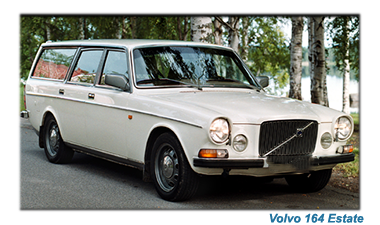 hat appeared with the Volvo 164 was that driver and passenger seat backrests were designed in such a fashion that they would minimise “whiplash “injuries in the event of a tail end” shunt.”
hat appeared with the Volvo 164 was that driver and passenger seat backrests were designed in such a fashion that they would minimise “whiplash “injuries in the event of a tail end” shunt.”
These were just a few of the safety features that typified the Volvo 164 and helped to increase its saleability despite a comparatively hefty price tag.
Volvo produced just short of 150,000 164s during the car’s six-year production, with a large percentage exported to the US.
The Volvo 164 was discontinued in 1975 to be replaced by the 264- even more formidable and safer.






